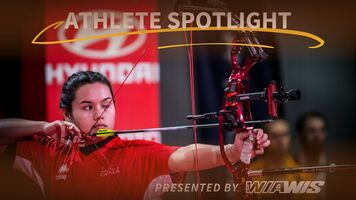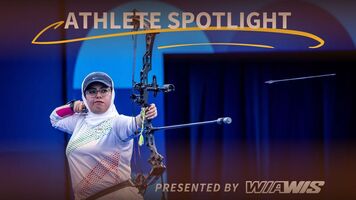Michele Frangilli: A heretic archer or the blueprint for success?
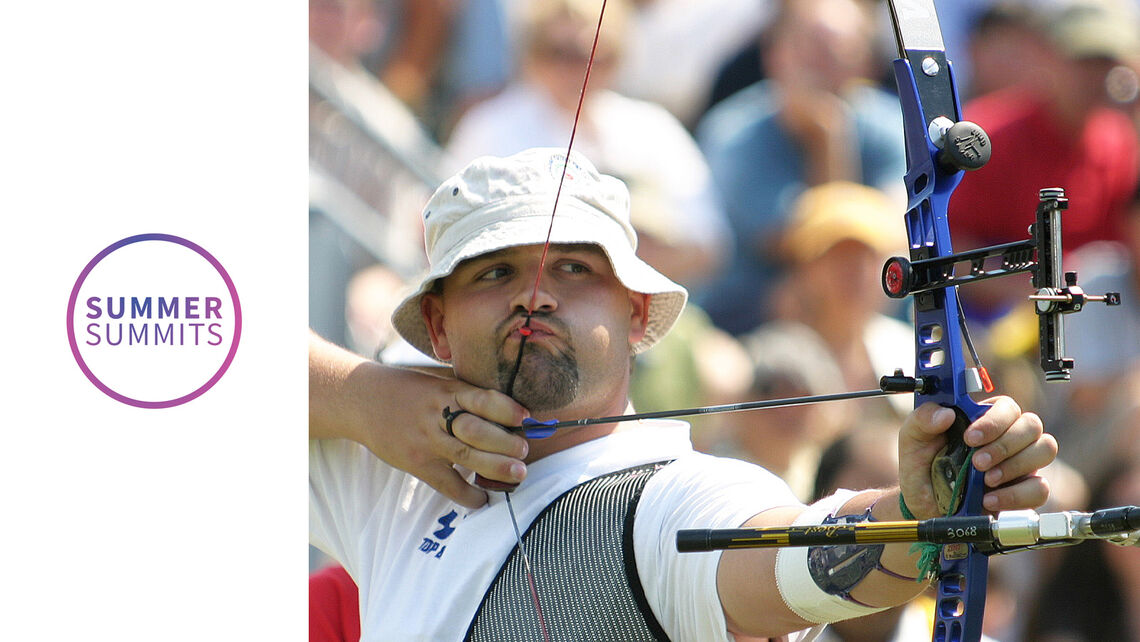
Michele Frangilli’s extraordinary story in elite archery, which started back in 1986 when he was just 10 years of age, remains a work in progress.
Over more than two decades, he has taken a vast array of junior and senior world, European and Olympic titles, and has come tantalisingly close to winning every major crown available.
Uniquely, he is the only recurve archer to have become world champion in the triumvirate of disciplines: indoor, outdoor and field. (Something that is more unlikely to be equalled now that the indoor championships have been discontinued.)
The most ‘different’ thing – to an outside observer – about Frangilli is his technique, which seems to defy orthodox archery philosophies of simplicity and elegance. Developed in the 1990s by Michele and his father and coach Vittorio, it is referred to as the ‘heretic technique’, and is designed to give complete control over the shot cycle.
But Frangilli’s career has not been defined by his technique alone.
It has been defined by his winning. From 1999 to 2003, he was one of the dominant figures in the sport, and that period culminated in an individual world title in New York.
In those years, he crushed the European Grand Prix circuit (a forerunner of the Archery World Cup). He won all three legs in 2000 and, at the last, defeated the three members of the Korean men’s team in attendance, one after another.
In 2001 and 2002, he shot three indoor world records. One of those (at 25 metres) still stands. He also won the world field championships in 2000, 2002 and 2006, along with countless other titles on the world and continental stages.
Michele’s qualities as a champion were undisputed. And they were on show for his gold medal match in Nimes in 2002 when he shot against Chung Jae-Hun from Korea.
It was a tight contest. Two excellent archers in form.
But the Korean archer shot an arrow out of time after misunderstanding the clock. The match should have been over but Michele accepted the arrow and overruled the judge, and lost.
He became a hero to the crowd there – and every time he has returned to Nimes since.
And return he does, year after year, to major competitions like the Indoor Archery World Series stage in the south of France – and to the Italian national team, which forever seems to be in limbo between exciting new talent and grizzled, experienced veterans.
Frangilli is no longer in his heyday. He’s aware that this is the back half of his career. He knows how good he is now – and how great he once was.
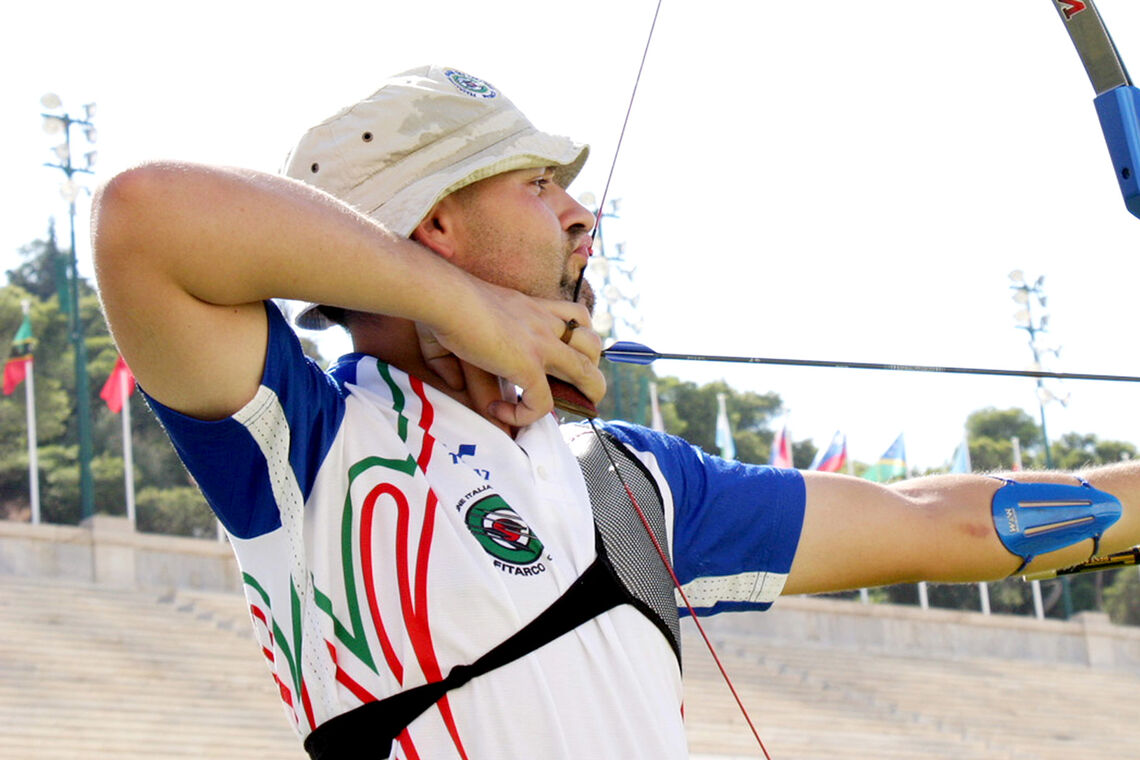
“I was thinking of myself as being invincible, and everything was so easy,” he said. “Shooting a 1350 FITA or 300 indoor at any moment was nothing special. Unfortunately, from 2004 I started to have some injury problems, and that golden age ended.”
Michele’s era of dominating competition came around the turn of the millennium. Arguably his highest-profile moment in archery didn’t happen until much later.
At the London 2012 Olympic Games, a relatively unfancied Italian team had fought their way into the men’s final, facing a buoyant USA who had defeated Korea in the semis.
It was Frangilli who would shoot the match’s final arrow, under time pressure and in a situation where only a 10 would do.
“I remember the whole sequence of that last shot as if it were today… I knew everything, I heard the noise. I was mostly focused on not making a mistake,” he recalled.
Of course, the arrow hit its mark and the Italian team became Olympic Champion. But that 10 in London was an inevitable result of decades of obsessive focus on mastering perfect, sequential execution.
It was, in a sense, entirely expected.
“She went where she needed to go,” he shrugged. For Michele, the arrow that would – for better or worse – define his career wasn’t even his best moment of those Games.
“People remember my last arrow [at London 2012], but no one remembers my last arrow in the semifinal match, also a 10, where the pressure was even higher!”
His essential philosophy has always been consistent: Master the shot cycle sequence, regardless of external pressures. It is what separates winners from losers.
“For me, the winner is the one that is able to control his sequence in any moment, in any weather conditions and with any kind of pressure on their shoulders. Those that are not in full control of their sequence don’t control their emotions. They can only occasionally be winners,” he explained.
“If I see another archer shooting, it only takes a few minutes to know if they will be a champion. Because if an archer is not clearly showing that they dominate their own technique, he or she will never be a special one.”
From the very start, Michele and Vittorio challenged conventional wisdom. They were not afraid to take difficult routes in search of perfection.
Despite the near-universal adoption of the Easton X10 among elite recurve archers, especially in the 1990s and 2000s, Frangilli has seldom used the arrow. He’s stuck with the Easton ACE for the vast majority of his career because, after much extensive testing, he decided they worked better.
He still shoots the equipment today, and uses a point that was discontinued by Easton over 15 years ago. It is just one of many small technical details, such as highly customised tabs, that he has spent decades optimising.

The distinctive ‘heretic technique’ is fully described in the book, The Heretic Archer, authored by Michele and Vittorio.
Developed from Russian origins in the 1970s, it involves hooking the thumb behind the sternocleidomastoid muscle of the neck. While this is less common (but not unknown) among archers following modern ‘orthodox’ biomechanical technique, it was once much more prevalent among the elite.
Top archers like Viktor Ruban, Brady Ellison and Oh Jin Hyek all use variations of the approach in their shooting.
“It’s not about [getting] the thumb behind the neck,” said Vittorio. “The technique is about how to reach anchor and to control it in the best way possible.”
The heretic technique extends the shot cycle to a series of 11 discrete steps that create perfect alignment and anchor every time.
“For sure, you can win or lose at any of the steps,” said Frangilli. “My technique is difficult to learn and practise, hence it is not imitated much and is not considered ‘normal’ by archery specialists.”
The book, alongside Vittorio’s coaching practices, has spread the DNA of the heretic technique around the world, and elements of it can now be found in the coaching of many national teams – even if it is not common in the Frangillis’ native Italy.
(Vittorio said that he was once told that Michele’s form would never get him into the Italian team, let alone gain all the international success he has enjoyed.)
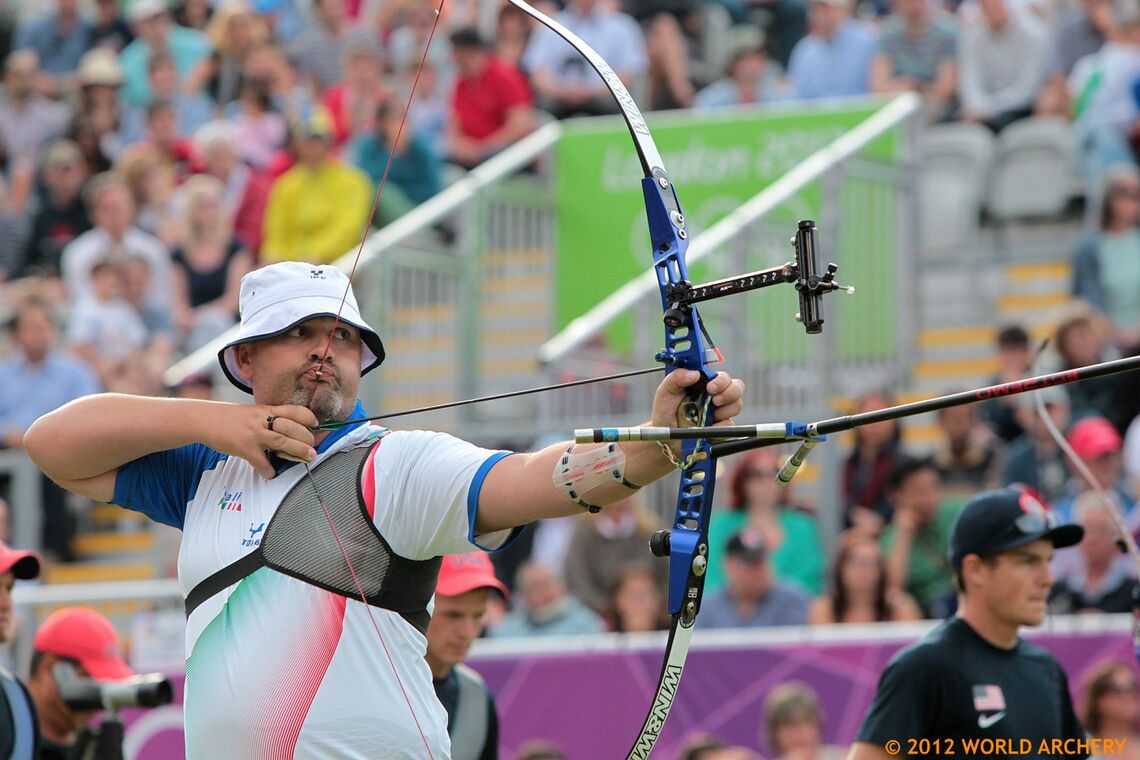
“Many other archers are consciously or unconsciously following a lot of the parts of my technique. Quite often they don’t know it, but they are,” said Frangilli.
Another variation on orthodox standard is pushing the front arm to expand and get through the clicker, rather than the push-pull expansion technique employed by most recurve archers. This is much more difficult to perform, but Michele and Vittorio believe that more errors are produced with the release hand than the bow hand – so have striven to minimise its role at the point of execution.
Michele was keen to stress that the technique is really only a part of the package:
“Success in archery is made by talent, full dedication, optimal coaching, optimised technique and perfect materials. For sure, my technique had a great part in my successes, but it is difficult to weigh it exactly among the other components.”
Important in Frangilli’s later career is the structure that enables him to compete. In 2006, he became a member of the Italian Air Force, allowing him to continue training full-time as an archer.
Several other nations have similar programmes, essentially outsourcing elite Olympic sport to the military or federal police, and fellow Italian Olympic gold medallists Marco Galiazzo and Mauro Nespoli are also in the Air Force.
Frangilli was blunt about the commitment.
“Archery is my job. I am in the Air Force, but as a full-time archer,” he explained. “It’s my job to continue to win medals for Italy.”
Michele is one of the few very elite archers who, throughout his career, has given equal importance to the non-Olympic disciplines. He sees field archery as a vital component in the process of developing a complete archer – and learning how to control a shot.
“Field shooting is the university of archery. I have practised field shooting since I was 10 years old, and I have always loved this discipline,” he said. “The progression to the full control of the shot in any situation needs training in any possible shooting condition. This can only happen during field competitions.”
“What you can learn on a very hard and challenging field course cannot be simulated by hundreds of days of training in the same position and on the same fixed distance target. Of course, the four-distance FITA round was also a good training in this respect, but not as good as field.”
Michele won three world field titles and a World Games but stopped shooting the discipline in 2011 due to his health.
“It still remains in my heart as the most challenging (and nicest) discipline in archery,” he said.
A comparison can be made between Frangilli’s approach and results and that of another contemporary recurve archer.
“In the last few years and now, I only see Brady Ellison as the most complete archer existing and the one repeating my golden years, not in target archery only, but including field and indoor, too,” said Michele.
“There are no others around like this. Some are very good in something, but not in everything like he is and I was.”
After over three decades in the sport, just two blue-chip titles elude the Italian archer. He has never won the European indoor title, nor individual gold at the Olympic Games. Michele has not given up hope that he will win both before he is done.
Not selected for an Italian team that had a frustrating trip to Rio in 2016, Frangilli is aiming at Tokyo for his fifth Olympics.
“Last year in July I got surgery to my bow shoulder that partially has solved some of the problems I had since 2011 with it,” he said. “If the Olympic Games had been in 2020, it would have been difficult to imagine qualifying to them, but frankly the lockdown and postponement to 2021 has done me a favour.”
Michele’s career is a lesson in lifelong dedication. It is an ode to ignoring conventional wisdom. And it proves that archery is not about having what you might call ‘perfect’ technique.
Archery is about being consistent, committed and in control of body and mind – so that you can be confident in delivering the right arrow at the right time…
…and shoot a 10 when you, your team and your country need it most.









